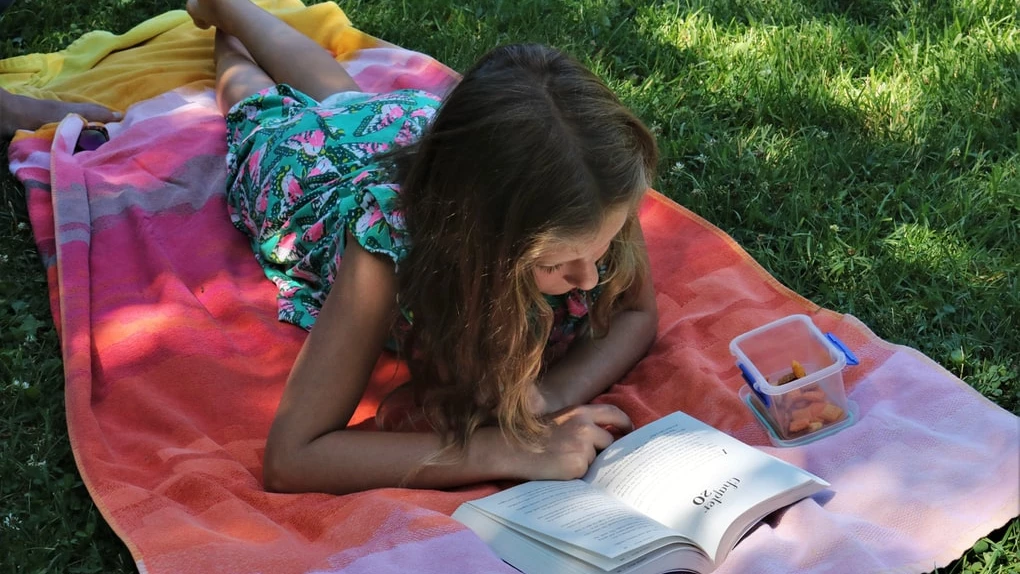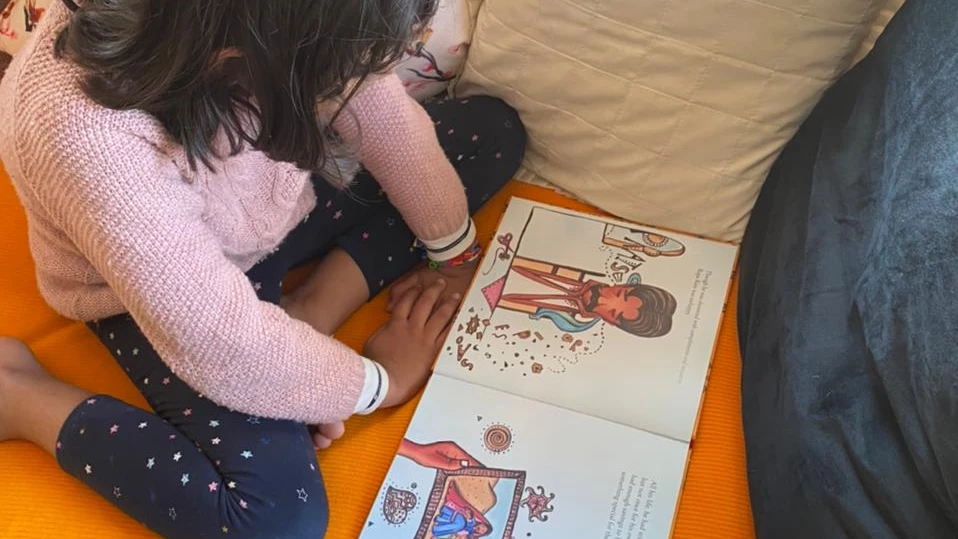Do you love DIYs? I certainly do, as do most of the kids I work with. They are so satisfying… creating something new from scrap, and odds and ends you find around your house. Now, what if I were to tell you, mending clothes can give you the same endorphin high? And, wait for it, what if I were to come closer and whisper in your ears, mending clothes is a brilliant way to bond with your child, while creating teachable moments: The need for repairable clothing, how to reduce wastage, why we need to reduce it and, of course, how to hold a needle and sew, and learn some math!
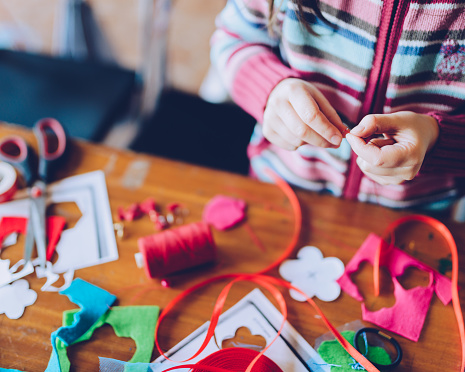
Orsola De Crasto, founder of Fashion Revolution, describes mending clothes as a revolutionary act in a world built around use-and-throw culture. In Great Britain, politicians are urging schools to start teaching children ‘the joy’ of mending to tackle the environmental damage from ‘fast fashion’. It may seem intimidating, or even unwise, to hand over a needle and a pair of scissors to a child, but fret not. We put together some exceptional tips and resources to help you and your little one navigate the world of quick, easy mending.
Children as young as three are already experimenting with grasping, pinching and tearing. It is essential to give them as many opportunities to develop their fine motor skills around the house as possible, and that’s just how mending helps. So no, young children are not ‘too young’ to hold a needle or scissors. You can use a tapestry needle and a kids’ scissors for very young ones. But do let them join in the process, even if they make a big mess.
So, get your needlework box ready and start sewing!
STARTING TO SEW
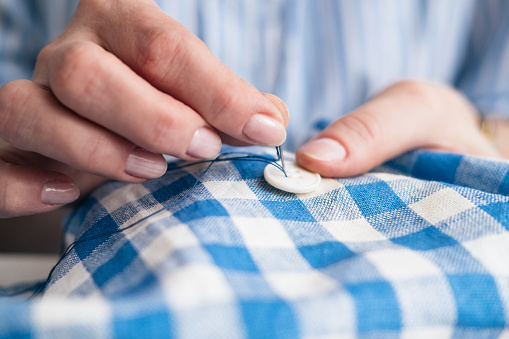
BASIC MENDS
A good starting point for anyone new to sewing is learning to:
- Sew on a button
- Fix a hem
- Reattach a strap
- Darn
- Mend a tear
The first thing you need to introduce your child to, is the concept of a needle and thread. Like, of course! This post provides a great starting point. Once your child has got a hang of it, you can move to the next step: Sewing on a button, adding it on to the same exercise.
Remake, an international not-for-profit on a ‘mission to get women in the clothing industry paid fairly’, put out this ready reckoner with step-by-step instructions on how to do simple mends. These are so easy-to-follow, you can use them to help teach your child the above basic mending skills.
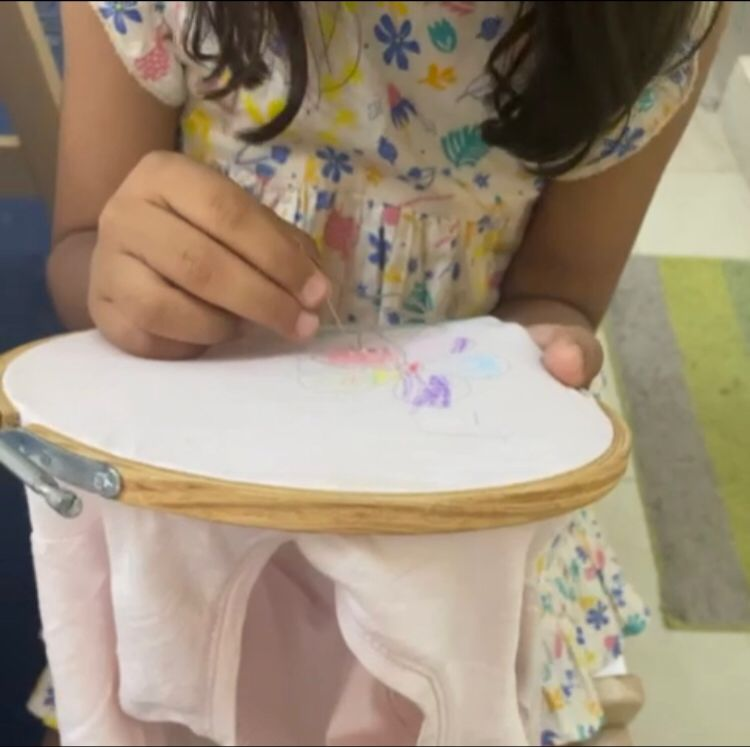
But what we find helps most is when a fellow parent or caregiver shares their experience with their child. In, this post, Caroline Hurd, a fashion designer, sewing instructor and parent, shares how she helped her son repair a small tear in his T-shirt, with a ‘skull’ patch. You can try another kind that your child loves. Go on, give it a try!
These simple hacks put out by ,Honestly Modern, to make your children’s wardrobes last, may be written for adults, but is an excellent guide to teach simple hacks to children–ones we’re sure they’ll enjoy, across age groups. One of our favourites is visible mending, where you deliberately place stitches on the outside to create interesting designs. This is where your child’s creativity can really kick in.
SEWING IS MATHS!

Maths is everywhere! In mending clothes, too! There is measurement, of course. And then you have patterns, addition, subtraction, multiplication… Let’s say you’re mending a stuffed toy, and you need to mend the ears. Ask, if we want two pieces of 2 cm long cloth to make one ear, how many sets of 2 cm long cloth do we need for two ears? Two sets would mean 4 pieces of 2 cm long cloth to make 2 ears. This is multiplication.
Or if you and your child are fixing a tear in their jeans, and they decide to put multiple patches on it, they will need to measure the tear and estimate the number of patches needed. They can create patterns by placing different coloured patches alternatively.
EMBROIDERY FOR MENDING CLOTHES
We associate embroidery with delicate cross or long stitches, done by ladies in saloons, bent over embroidery hoops for hours. But, lately, schools and parents are letting young children learn how to embroider, which can be used to create a patch to repair a tear or for jazzing up a dull, faded, old T-shirt which still has plenty of wear in it.
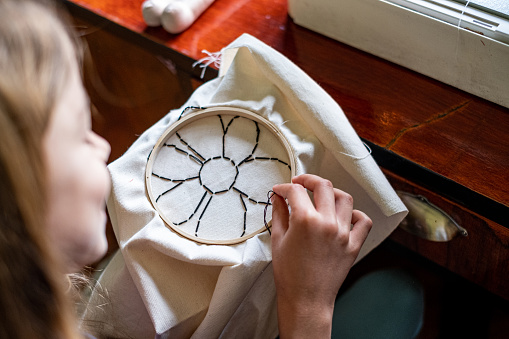
Embroidery Rocksea is a repository of embroidery patterns, and this particular post on teaching and letting children embroider, fits in very well with our theme. These interesting yet simple patterns can be stitched on to torn jeans, T-shirts, dresses, skirts, almost anything!
Spruce Crafts provides some dos while teaching young ones to embroider, along with providing a comprehensive list of basic embroidery stitches. And coming back to our favourite visible mending, you can combine it with embroidery to create beautiful patterns while repairing, let’s say your socks!
I hope you try these mends with your children. Do share your experience with us, in the comments!
. . .



